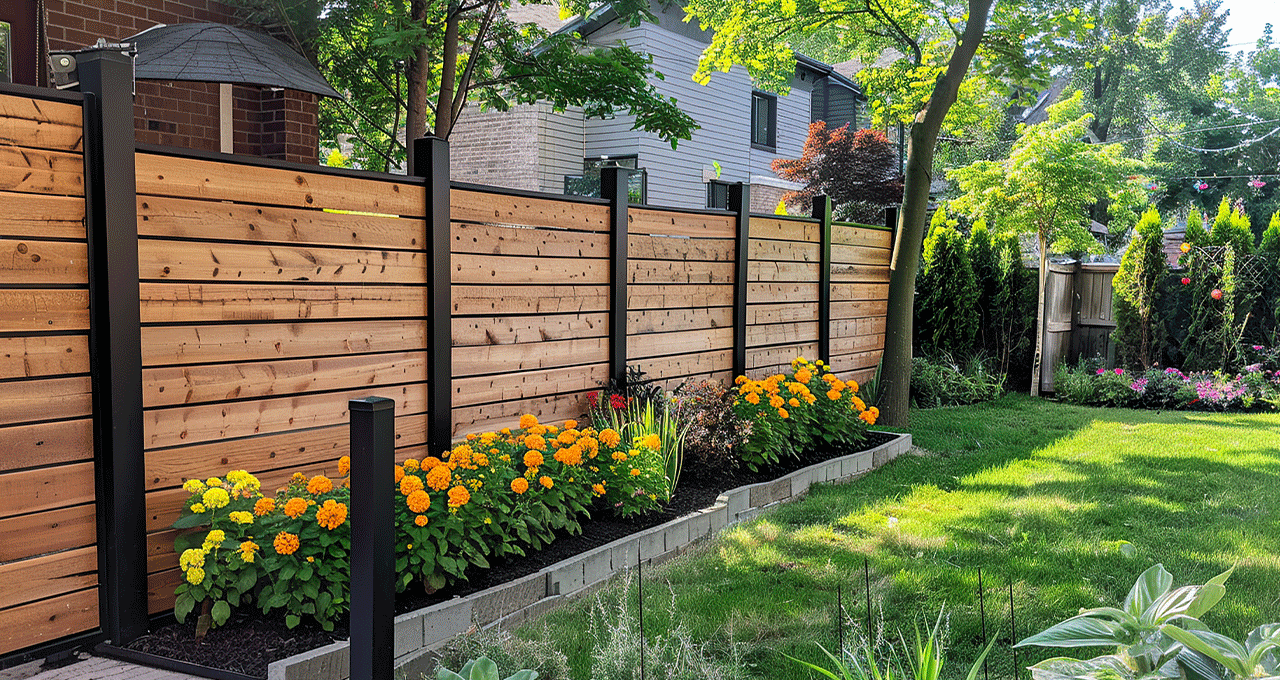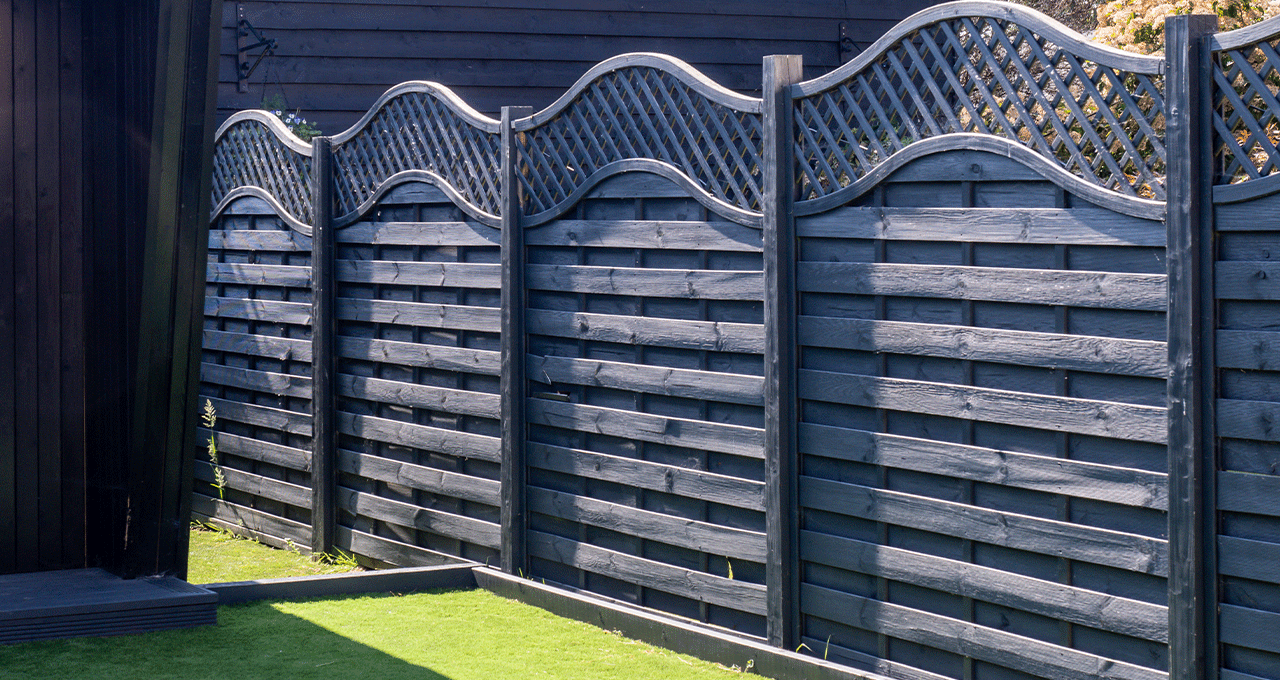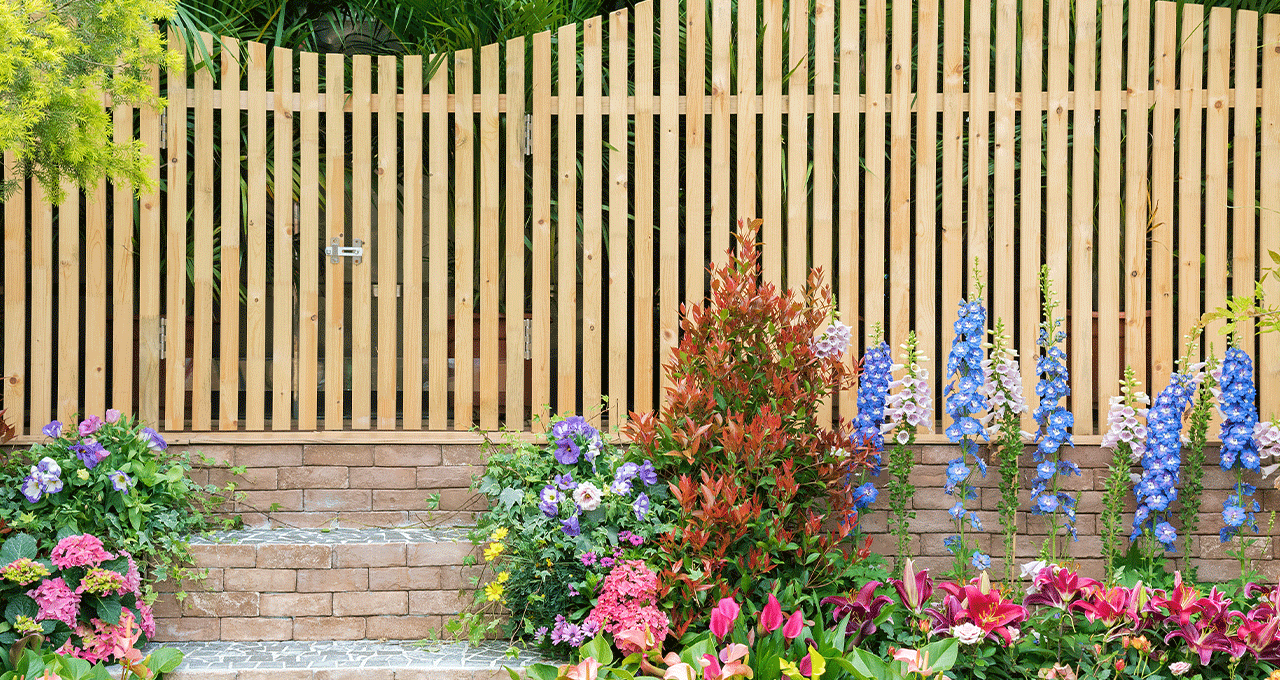Types of Wood Fences: 6 Steps to Settling on the Best Style for You
Wooden fences are popular for a reason: they possess an unbeatable natural charm, they’re robust as can be, and they’re a more sustainable option than many other materials. But, with so many types of wood fences to choose from, along with the accessories accompanying them, shopping around can feel like more of a hindrance than a help.
Not to worry, though. Before your head starts spinning with all the possibilities, allow us to give you a helping hand. In this blog post, the timber specialists at Estate Sawmills have put together a guide to selecting the best options from the different variants of wood fencing available, whether your priority is delineating unclear boundaries, carving out a private zone for relaxation, or simply enhancing the visual appeal of your plot.



Why Wood?
Wood is popular; so what, you might say? Well, among the myriad of elements to consider when building a new fence is how long the material will last, how it’s going to age and whether it’s going to do a good job long term. Wood fencing excels in all areas. Treated timber brings with it a balance of timeless aesthetics, functionality and affordability. In other words, savvy homeowners can rest assured knowing their fence was a cost-effective purchase. Not only is the wood easy to maintain, paint and treat, but its pliability means that there is no lack of options. As we’ll reveal later, there are so many customisation options and choices that allow you to prioritise whatever you value most, from security and refuge to durability against harsh winds. The European market share for this product is a hefty 30% for a reason – we can’t get enough of them!Where to Start with Your Decision-Making
First things first, let’s talk considerations. Before we get to the fun part – looking at the types of wood fences on offer – it’s helpful to take a step back and think about practical features such as strength, treatment and size. These elements will all have an impact on your fence’s overall performance and how snugly it will fit into your unique requirements. Make a note of the following:- The fence’s function and purpose – Privacy, style, containment, security, or something else?
- Style – Are there aesthetic constraints at play?
- Size – After a particular size? If so, make sure the height falls within the scope of planning permission in your area.
- Robustness – Not all wood fences are made equal; some require more upkeep or repairs. Would a more heavy-duty option save you money & effort in the long run?
- Cost – Do you have a specific budget for this project?
- Neighbour relations – Do you value being able to chat over the fence, or perhaps want a little more privacy?

6 Steps to Ensure You Pick the Right Type of Wood Fence for the Job
Step 1: Measure Up Your Plot
To choose the right garden fencing, you first need to know the dimensions of your plot. Grab a measuring tape and take an accurate reading of the perimeter or length on which you plan to install the fence. Be sure to note any irregularities or obstacles, including trees, shrubs, or uneven terrain that may affect the placement or entail some clearing and levelling beforehand. Being as precise as possible will help you determine how much fencing material you need and prevent any wastage. Got the numbers? You can then plug them into our fencing calculator to work out the cost.Step 2: Select the Variety of Wood
Once you have your measurements, the next step is to choose the wood species you’re going for. Of all the types of fence materials, wood provides the most versatility, since there are so many varieties, from softwoods to hardwoods, each with its own advantages and considerations.Cedar
Cedar fencing is renowned for its natural resistance to decay and insects, making it a popular choice for fences on residential and agricultural properties alike. Its rich, reddish-brown hue adds warmth and beauty to outdoor spaces, and it weathers gracefully over time, requiring minimal maintenance.Pine
Pine fencing offers an affordable option with versatility in design. However, proper treatment is necessary to enhance its durability and prevent decay. With the right care, pine fences can provide a charming yet functional boundary for your garden.Redwood
Prized for its durability and natural resistance to decay, redwood timber boasts attractive colour variations, ranging from light pink to deep red. These fences are not only sturdy but also add a touch of elegance to outdoor spaces.Pressure-treated wood
Pressure-treated wood, commonly made from pine or fir, is treated with preservatives to increase its durability and resistance to harsh weather conditions. Undeniably one of the best woods for outdoor use, it makes an excellent choice for areas with high moisture levels or exposure to the elements.Hardwood
Another standout pick for durability, hardwood fencing offers exceptional strength and robustness, so it comes as little surprise that it’s a top choice for those seeking a long-term fencing solution. While hardwoods may come at a higher cost, the elegance and longevity make it a worthwhile investment.What About Wood Alternatives?
If you’re still on the fence (sorry…) about wood, there are other avenues that provide a similar look without missing out on any of its merits. While you might not get quite the same sense of authentic warmth from the appearance, at a glance, composite fencing and timber can achieve a similar effect. Allow us to explain: Composite fencing blends wood fibres with plastic, resulting in a low-maintenance and hard-wearing surface. Resistant to rot, decay, and insects, their boards offer the look of traditional wood without the upkeep, making it an attractive choice for people with little time on their hands, not to mention striking modern garden designs.
Choosing the Fence for You
Okay, it’s time for the most interesting part! Now that you have the basic groundwork laid out, we can explore the various wood fence types.Step 3: Browse the Types of Wood Fence Available
When considering wooden fencing, looking at a diverse range of options will help you narrow down your preferences to suit your specific wants and needs. Besides height and gap width, strength and robustness are key – particularly as we’re seeing more and more extreme UK storms year on year. Here, we’ll zoom in on 4 main categories.Solid Fencing
Solid fencing provides the ultimate solution for privacy and security. These fence panels are constructed without gaps between the slats or pales, creating a robust timber screen that ensures complete concealment and protection from intruders. Types of solid fencing include:Semi-solid Fencing
Semi-solid fencing panels strike a balance between privacy and visibility, making them one of the best types of wood fences for gardens and even small businesses like restaurants. With horizontal slats or pales featuring small gaps between each, these panels allow light and air to pass through while still providing a level of privacy. They are ideal for creating garden dividers or feature panels that add style to outdoor spaces. Types of semi-solid fencing include:Decorative Fencing
Decorative fencing panels serve as both functional barriers and aesthetic enhancements for your garden. With the addition of these panels, it’s easy to imagine turning the heads of your neighbours, impressing them with front garden fence ideas that go beyond the run-of-the-mill options. Yes, versatility is key here. Featuring various designs and patterns, these panels can make a statement or subtly enhance the existing scheme whilst framing your garden, adding a new dimension of interest and personality to outdoor spaces. Types of decorative fencing include:Agricultural Fencing
Agricultural fencing is exactly what it sounds like: fencing designed for farm or farm-adjacent settings. As such, it’s not surprising that it’s typically employed to enclose cattle or demarcate the boundaries of countryside properties. While these are the most common uses, there’s nothing stopping homeowners from using this type of wood fencing in their own plots, especially for keeping pets like chickens. For more details, you can check out our dedicated guide.Garden Trellis
Garden trellis fencing offers versatility and charm, serving as a garden screen or topper panel to complement existing fencing. Trellis panels are constructed with quality materials and craftsmanship, providing support for climbing plants while allowing sunshine to filter through. Types of garden trellis include:Step 4: Ensure Your Fence is Treated
Once you’ve chosen the optimal style of wood fence for your garden’s needs, it’s important to ensure that it’s properly treated to withstand the elements too. Depending on the material you’ve selected, this may involve applying a sealant, wood treatment, or paint to protect the material from the deadly combination of threats plaguing most British gardens: rot, insects and moisture damage. When purchasing timber fences, you can make your life a little bit easier by selecting wood that has been tanalised – this process ensures that both the panels and posts are as sturdy as possible.Step 5: Pick Out Your Fence Posts and Accessories
The next step is to choose the appropriate fence posts and accessories to complete your fencing project. Fence posts provide structural support and come in various materials such as wood, metal, or concrete, depending on the level of protection you require from high and waterlogged earth. The accessories are the cherry on top. Typically, they include gate hardware, post caps, and decorative accents to add those eye-catching finishing touches.Step 6: Add Gates or Garden Arches
Finally, if your garden fence covers any access points, like the entrance to your back garden, now is the time to think about gates or garden arches. Not only are they functional in the sense that they provide space for climbing plants to latch onto or additional shelter in the form of enclosure, but they look damn good too. Whichever you prefer, know that these decorative focal points are practically the simplest ways to create vertical interest in your outdoor space.
Over To You
With these steps in mind, consider yourself well on the way to selecting the optimal fence for your plot. Hopefully, by now, sifting through all of the types of wood fences on offer is a doddle – all you need to do is keep your practical needs, aesthetic preferences and budget top of mind. To explore a wealth of options, from reliable wood to cutting-edge composite, check out our complete range. We can also help you get the ball rolling if you need to talk through your options or gather intel on your fence installation project via our garden and landscaping blog. Now, over to you.
07/07/2025
#timber
#Fencing
#Garden Fence
#Fence Care
#Agricultural
#DIY
 Processing
Processing